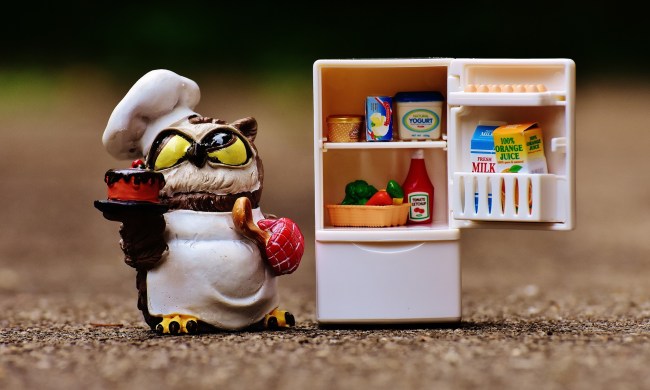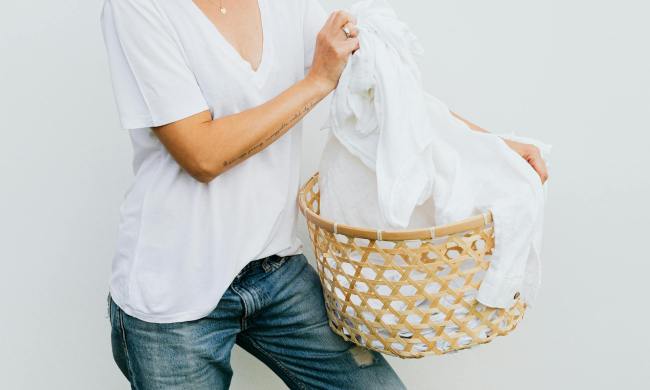Who can resist the allure of baby clothes? Fuzzy little socks, sweet onesies, a tiny pair of jeans, there are so many adorable ways to dress your baby for every situation. But, unlike adult clothing, baby clothes aren’t meant to be worn season after season. Each item has a shelf life, dictated not just by the weather but by the unstoppable growth of tiny newborns, crawling babies, toddlers, and preschoolers.
Whether it’s the new layette items you purchased for the baby’s arrival, gifts from friends and family, or kind-hearted hand-me-downs from other moms, it’s possible to have a collection of clothing for babies ranging in size from newborn to 4T and beyond. And that doesn’t even factor in the separation of summer clothes and winter clothes.
How do you tackle the seemingly monumental task of making sense of it all? We’ll show you how to keep your baby’s clothes organized with these ideas!
 Simple ways to master baby clothes organizing
Simple ways to master baby clothes organizing
- Organize by size: Take everything you have and put the clothes into piles organized by size—one pile for each size. Since baby clothes can have size ranges (0-3 months, 3-6 months, etc.), place clothes in piles according to the beginning part of the size range—3-6 months would go into a 3-month pile.
- Create a donate pile: As you sort, separate items you don’t like, can’t use, or your baby has outgrown and put them into a “donate” pile. If you don’t have any friends who could use some free baby clothes, many worthy charities will be more than happy to accept your donations. If you have items that you think might be considered valuable, check into selling them online and through local consignment shops.
- Store clothes you can’t use immediately: Since most nurseries don’t have unlimited storage space, place the clothing that is out of season or currently too big for your baby into plastic bins or vacuum-sealed bags. Label the boxes or bags by size and season: “6-9 Month Summer,” “12 Month Winter,” etc., so when your baby grows or the season changes, you’ll easily be able to grab the box or bag you need.
 Baby dresser organization 101
Baby dresser organization 101
Now that you’ve organized your baby’s clothes by size, it’s time to put the clothes away—those not going into storage, that is!
To maximize space and efficiency in your baby’s dresser, you may wish to purchase drawer organizers. Since baby clothes are so small, organizers are a good way to keep clothes neat and tidy. Organizer boxes or dividers placed directly into dresser drawers will keep clothing item categories separated and easy to find.
Top drawers should be reserved for the most frequently used items, each separated within their own organizer box or compartment, including:
- Diapers
- Socks/tights
- Miscellaneous baby necessities: pacifiers, nail clippers, brush & comb set, etc.
- Burping cloths
- Short and long sleeve onesies
Middle drawer(s) are for sleepwear and bedding. During that 2 a.m. feeding and diaper change, you’ll want easy access for quick changes if needed. Use this space for:
- Pajamas
- Blanket sleepers
- Sleepsacks
- Extra crib sheets
- Mattress protectors
- Changing pad covers
Use the bottom drawer(s) for baby’s everyday clothing, including:
- Pants
- Tops
- Sweaters
- Shorts
- Leggings
- Overalls
Baby closet organizer
The nursery closet is the perfect place to house fancier items, like holiday outfits and dresses, as well as seasonal jackets and snowsuits. If you’re lucky enough to have built-in storage shelves, you can use them for storing your pre-sorted and labeled bags or boxes of clothing that baby doesn’t fit in yet, as well as blankets, extra crib sheets, spare boxes of diapers, and more.
If your closet doesn’t have built-ins, you can buy shelving units to install inside the closet or free-standing stackable shelves that will do the trick.
A few other helpful tips:
- Be sure to designate a storage cube or shelf for baby shoes.
- Closet dividers can help organize clothing by size for easy access.
- Baby-sized velvet hangers maximize space and are more compact than wood or plastic hangers.
The one constant with managing your baby’s clothes is that he or she will always continue growing. Once the dresser and closet are perfectly organized, it will be time to swap out for the next clothing size. But, with our easy-to-follow baby clothes organizing tips, you’ll be able to manage the task with ease and keep your baby happy and well dressed!
 Simple ways to master baby clothes organizing
Simple ways to master baby clothes organizing Baby dresser organization 101
Baby dresser organization 101


